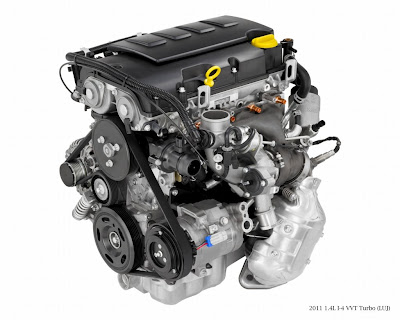




A day after a tidal wave of insolvency inundated Wall Street creditors and set the Dow Jones tumbling, General Motors celebrated its centennial.
And in the midst of such turbulent economic tides, there was hardly a better way to celebrate than with the unveiling of the production ready 2010 Chevrolet Volt.
“It is a great way to open our second century,” said Rick Wagoner, GM Chairman and CEO. “The Volt is symbolic of GM’s strong commitment to the future … just the kind of technology innovation that our industry needs to respond to today’s and tomorrow’s energy and environmental challenges.”
Innovative design throughoutAt first glance, it's clear that a healthy amount of time was spent honing the Volt's aerodynamics. On the whole, the production appears retains much of the concept's design essence while at the same time making concessions to aerodynamic and cost efficiency.
The Volt's rounded and flush front fascia, tapered corners and grille are the most readily apparent changes, all designed to minimize turbulence and the aerodynamic drag that results. Out back, the rear fender, spoiler and steeply raked rear window combine to form a faceted, sleek composition that allows air to flow off and away quickly.
Inside, the Volt offers a broad, airy cockpit for four, packed with leading-edge technology. Prominently placed in the center console is the Volt's standard touch-sensitive infotainment screen. The screen is used to display information about the battery's state of charge, climate control and audio systems.
Standard audio will include a six-speaker MP3 enabled CD player with AM/FM radio, as well as Bluetooth networking for hands-free phone integration and music streaming from a Bluetooth-enabled personal music player. Navigation will be offered as an option; the system will also include an on-board hard drive for storing both the navigation system's maps and music recorded from CDs.
In lieu of conventional analog gauges, the Volt uses a color LCD screen which the driver can reconfigure to his or her liking. More details on the instrumentation will come to light as release date nears.
All of this design and technological wizardry is an accessory to the key innovation of the Volt — its electric-gasoline drivetrain.
Under the hood, electrons abound... gasoline optionalUnlike a conventional gasoline-electric hybrid, the Volt's electric motor drives the car's wheels all the time at all speeds. For up to 40 miles on a full charge, the 16 kilowatt-hour lithium-ion battery provides all the vehicle's power, which means no gasoline used and no tailpipe emissions.
When the battery is depleted, a gasoline-powered engine turns an on-board generator, providing electricity to power the Volt's electric drive unit and simultaneously sustaining the charge of the battery.
Unlike previous electric vehicles, the Volt will never leave the driver stranded by a flat battery. Further enhancing the car's efficient drivetrain, the Volt can be plugged into either a standard household 120-volt or 240-volt for direct charging of the onboard battery off of mains power.
At 240 volts, the Volt will fully recharge in three hours; eight hours are required with a 120v outlet. Charge times are reduced if the battery has not been fully depleted. At a cost of about 80 cents per day (10 cents per kilowatt-hour) for a full charge that will deliver up to 40 miles of electric driving, GM estimates that the Volt will be less expensive to recharge than purchasing a cup of your favorite coffee.
Charging the Volt about once daily will consume less electric energy annually than the average home's refrigerator. For a driver that stays within the Volt's 40 mile electric-only range and recharges off of mains power, about 500 gallons of fuel will be saved. At an average price of $3.60 per gallon, that’s a yearly savings of $1,800. Commuters with a 60 mile round trip commute could save up to 550 gallons, or $1,980 per year.
In addition to offering substantial fuel savings, the Volt's electric drive unit offers spirited driving performance in a remarkably quiet interior. The Volt delivers the equivalent of 150 horsepower and 273 pound-feet of instant torque to the wheels. Top speed is electronically limited to 100 miles per hour. The lack of engine noise, combined with special sound-deadening materials make the Chevrolet Volt a particularly quiet vehicle to drive.
 An American Revolution (we hope)
An American Revolution (we hope)The last remaining step in the Volt's production process is to settle on a location for the plant.
Wagoner has expressed interest in keeping Volt production stateside and has begun lobbying Congress for tax incentives both on production and retail sales of the Volt.
Assuming all goes well, the Volt will begin rolling off the line at GM's Detroit-Hamtramck manufacturing facility in late 2010. Pricing has not yet been announced, but we will continue to follow the Volt as further details emerge.
[
GM]
 After more than a month spent previewing the Paris Motor Show, it's time for a change of pace.
After more than a month spent previewing the Paris Motor Show, it's time for a change of pace.
















































